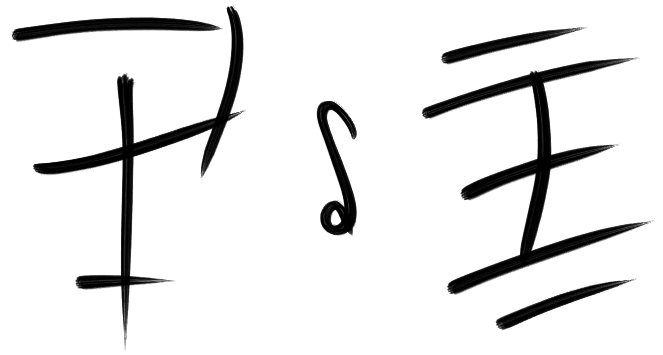Infernus: A General Overview
Kul'niir. Ulmiin nava'riin. Volkariin'malan zol kaliinul rii'dan ev ish in'lazankel iiniin. Pure Chaos. The Opposition of Order. To have Power is to have complete Glory, by which it is that makes the Demon.
— Ancient Demon Proverb
It's often mistaken that of the Planes of Existence that Infernus is the eternal realm of punishment by those living in the Mortal Plane. Although Infernus has its shares of horrors, like any other realm would, one could make the argument that the Plane is the most similar to Earth. Infernus was founded by The Primordial Deity Zan'nal'takriin during the Habitation Eon. It's unknown exactly how long after the Singularity Bursting when the Primordial began his great work. Although the plane was founded by Zan'nal'takriin, he did very little in its physical development. Instead, the task to build a realm worthy of a Primordial fell to Evii'iliz and the Ancient Demons. Infernus was the second Plane of Existence to be founded as well as the first divine domain. Infernus is called as such in Standardized Modern Demon Language (Yolniir Inlazankel). In Elder Demon (In'lazankel) and Ancient Demon (Sa'kul'niir In'lazan'kel) Languages, the realm is called In'vurnu (Domain of the Demon). Mortals, having the misconception that Infernus is the realm of eternal punishment and torment, call the plane Hell or Inferno.
A Realm Like Earth
Contrary to what humans in the the Mortal Plane believe, Infernus is not a place where people are sent for eternal punishment. Although it's unknown what lies beyond Falmii'kadan (Radiance of Life or the Sun) and the Diin'kel'balan (Twin Luminous Moons), Infernus is a planetary realm with many of the same geographical features, climates, and biomes found on Earth. Since the introduction of humans into Infernus, the realm has become a near parallel regarding society found on Earth, of course with some exceptions. Like on Earth, Infernus makes use of global internet, has massive metropolitans, and has even adopted some cultures from Earth. The similarities of Infernus and Earth are many, however, Infernus is more than 5 billion years older and is home to a species that believes it is above all others: the Lazankel (Demons).Demons, Devils, and Fiends
The Distinction between "Demon" and "Demon"
Unique to Infernus are its inhabitants, the Lazankel (meaning Demon in Standardized Modern Demon). the Lazankel is an odd word when translated due to its etymology tracing far back to the Ancient Rule. Lazankel, when written in both In'lazankel and In'lazan'kel Sa'kul'niir means "a being in the image of his greatness." Written in Yolniir Inlazankel, however, the word means demon. This causes some confusion to those not native to the realm. When referring to the general populace of Infernus as a whole, the norm is to write "lazankel" in its respective forms in either In'lazankel or In'lazan'kel Sa'kul'niir. When referring to demons, specifically the species, lazankel is written in Yolniir Inlazankel. Spoken, "demon" is the norm, however. As confusing as it can be to distinguish the terms, most people in Infernus, knowing English as a second language, will always just say "demon" or "devil" to distinguish between the two for simplicity's sake. Fiend has its own word for a variety of reasons.Demons
Demons are the direct descendants, or as they like to call themselves, the Lazankel, of Zan'nal'takriin. Demons are sentient and intelligent beings that take many numbers of physical forms. Some demons take humanoid forms, while others are complete horrors. Most demons have some degree of intelligence, the more powerful having intelligence that rival even the greatest minds from any Plane. However, demons have a long and tragic history. Demons are split into 3 subspecies: Ancient, Elder, and Contemporary. The Ancient Demons were the first of the demons and incredibly powerful, most notably the 7 Primordial Ancients who had power that could rival even that of gods. Unfortunately, the Ancients practically wiped themselves from Infernus in the Infernus Civil War. The Elder Demons are the demons that born in the final line of Ancients that sided with Zan'nal'takriin during the Infernus Civil War. Elders, like Ancients, took many physical forms and had great power. However, in Elder 7th Line (Generation "Decline"), the Avriin'durel Plague swept over the realm after interaction on Earth brought back a deadly virus. The effects of the virus would go on to change the Elders after several lines, either killing many of them or changing their physiology into the modern-day devil.Contemporary demons are Elders that were not affected by the virus that live(d) into the Contemporary Era. Demons make up the smallest number of Infernus's population and most have no trouble living among devils and humans in modern society.
Devils
Devils are the result of the Avriin'durel Plague. Devils are demons that had their physiology changed to be near perfectly identical to humans due to the illness. Devils are considerably weaker than Elder counterparts and are nothing more than a shell of what the Ancients once were. However, Devils have a much different mentality than a demon. Whereas demons often lack an understanding and dealing with complex emotions and empathy for other species, devils excel. Devils live much shorter lives than demons, only living an average of 97 Solar Years (388 Mortal Years). Devils also lack the same natural born raw power of demons. Instead, devils must learn how to become mages. Unique to devils is also the fact that some are even able to be born without the ability to perform magic. Devils make up the largest population of Infernus, co-existing with humans, and even having interspecies relationships with them.Fiends
Fiends, or Wol'wal, are "lesser beings of intelligence." Fiends are another result of the Aviin'del Plague. Where many Elders were either changed by the illness or never infected, fiends were Elders that were horribly disfigured upon the birth by an infected Elder. Fiends, at the time when they were first birthed, were demons that were cursed by their parents and left to survive on their own. Tossed in the wild with no guidance, the demons never gained intelligence and remained feral. Long periods like this, as well as breeding between fiends, led to a devolution of demons into what are now fiends. Fiends take many forms and its rare to find any single species of fiend that resembles anything humanoid. Fiends are not mages as they do not have the intelligence to cast magic. Instead, fiends have evolved (or devolved) into using their physical strengths to fight when needed to. Fiends can also be tamed and some even domesticated, although, many argue that domesticating fiends for anything other than combat is redundant. Calling someone a fiend is also one of the worst insults in Infernus.The Noble Household System
Created in Elder 1st Line (Generation Overrule), the Noble Household system exists as a way to keep the balance of powers of royalty in check. Noble Houses have special domains that they make in each of the Zan'nil. Noble Houses, in a nutshell, keep royal powers from having too much power by being able to vote on pieces of proposed legislation that a royal family may wish to enact into law. Noble Houses are also able to veto pieces of legislation in a Zan'nil or a Zan'nal by a 4/6ths majority of all noble households in either. Aside from being actively engaged in the legislature of Infernus, noble houses also have special domains that are under their own rule. These domains always adhere to the laws of both Zan'val and Zan'nil. Additionally, a noble domain can also have its own set of laws. Additionally, noble houses also have private militaries that are under their direct commands. These militaries are called the Ol'viilun, or the "Fighters of the Noble." Noble Households are divided into 3 groups: the Greater Noble Households, Lesser Noble Households, and Honored Households.Greater Noble Households
The Greater Noble Households are the oldest of the 3 and have lineages tracing back to the Elders (except for the High Royal Families tracing back to the Ancients). Originally there were 100 of the Greater Noble Houses, but after the 4th Great Holy War, 80 remained. Since then, surviving into modern-day are 72 of the Greater Noble Houses. These houses can have up to 5,000 servants in their Ol'viilun. Also, Greater Noble Houses have the Duriin'miin, the "Personal Herald Fighters," which are small but proficient servants that are sworn personal guardians/servants to family members of a greater house. Unique to these houses are also the Kal'raavul, the "Sacred Weaponry." These are incredibly unique and powerful artifacts that have great powers. Each greater house has one to two, and each is extremely guarded. One such Kal'raavul is House Avernus's "Secrets of Borrowed Time Grimoire," which holds the knowledge of what is said to be the greatest spiritual spell of all time: Borrowed Time, a spell that defies the laws of mortality itself, where pain becomes rejuvenation and death becomes life.Lesser Noble Households
These houses are houses that were formed after the formation of the 1st Kur'ska. Lesser noble houses are similar to greater noble houses in almost all regards except that these houses have smaller domains and can only have a maximum of 1,000 servants in their Ol'viin. These houses also don't have Kal'raavul. Currently, there are 160 Lesser Noble Households.Honored Households
Honored households are houses that have been officially recognized as being above a typical house but below those of the lesser and greater noble houses by either a High Royal or Royal family. These houses are those that were founded after the 4th Great Holy War. Honored households are not in the same field of the nobility of greater and lesser house, however, these houses came into being by performing great acts for the realm, and as such were elevated, being "honored" by royalty. Being an honored house is no small feat, and is something that even the greater and lesser noble houses have respect for. Honored households don't have the same political "rights" as their nobler counterparts, but they are allowed to vote in legislative affairs concerning the Zan'nil and Zan'val. These houses don't have domains that rule over, but, they are allowed a choice of any "unclaimed lands" by a greater or lesser house, within reason. Honored houses do not have Kal'raavul nor Duriin'miin.Leader of The Chaos Faction
As the realm was founded and ruled by Zan'nal'takriin, it was also in Infernus that the Chaos Faction began. Because he believed that the Universe should be left to Chaos and not Order, Zan'nal'takriin started the faction after Univeral Creation . His rival Ri'ful'dan, believed that Order should rule the Universe, and with this ideology clashing with the Great Devil's created many fights between the two. Since Universal Creation, Zan'nal'takriin and his demons have despised Ri'ful'dan and his angels; two archenemies with conflicting ideals that will never seem to end. Even in modern times, the two species have deep hatreds for each and it's not uncommon for the two to "accidentally" bump into one another. There have been many occasions where both sides have risked inciting another Holy War, as much as neither side wants one. Naturally, Infernus is the center for the Chaos Faction, and all pantheons that are apart of the faction are welcomed, with the exception of a few such as the Egyptian Pantheon. And although members are welcome, they are allowed to do as such on official business and cannot make the realm their homestay unless they go through a long and excruciating process by both their host realm and Infernus to gain Infernus citizenship. Members of the faction of Order, however, is not allowed in and are usually met with hostility.
Dante's Misconception
If this is Hell, then where's the fire and brimstone? Why don't I hear any screaming or demons? And...why do I hear birds and...is that the sun? What do mean you're a demon? You look as much as human as anyone I've ever seen. What do mean we had all wrong? Yeah I know of Dante's Inferno, but what's that got to do with it, and why is it his fault?When Dante wrote of the Inferno, what he never knew was that he was the victim of the greatest prank pulled off in Infernus's history. So much so, that he changed the image of a realm he never about so much, that it caused humans to fear it since his writing. A story that is passed down from devil to devil is the Dante Wenliil (Dante's Illusion), which is the story of how Infernus got its name in English. In a nutshell, it's unknown how, but a demon managed to to strike a deal with Dante in The Mortal Plane. The demon, whose name is said to have been Virgil, was a master Illusionist who crept into the mind of Dante and implanted into him images of Infernus. These images, however, were far from what the realm truly was and gave Dante the misconception of what Infernus was. In the demon languages, Infernus is called Iin'vurnu, or Of Many Sins. The story tells how after the demon crept into Dante's mind that Dante confused Iin'vurnu with Inferno. Since then the realm has been called Inferno in The Mortal Plane. Demons and devils have also adopted the name, but instead calling the realm Infernus instead as somewhat of a long-running gag and as tribute to Virgil's "greatest prank ever."
Governance
Infernus is an oddity when it comes to its government. The realm is best described as a mix of constitutional monarchy, a federation, and a republic.
At the highest level of governance, governing over the entire realm is the Julamiir'umiil, or the "Limitation of Powers" of royalty. This doctrine acts as a constitution that limits the authority of royalty e.g. a High King or King cannot make a law of his own accord. It must be passed by a special counsel (these councils vary depending on their kingdoms).
Infernus is split into 7 continents, although they are officially called Realms. Each Realm contains several layers of government.
Overseeing an entire realm are the High Royal Families. This layer is called Enkiil'mal, or "Greatest Oversight."
Below Enkiil'mal is Enkiil'yol, or "Great Oversight." Enkiil'yol is the largest layer of government in the realm. Comprising Enkiil'yol are the 72 Noble Households, including the 7 High Royal Families.
Enkii'yol is a system that is best described as federalism. Within the 7 Realms are the Zan'val and the Zan'nil. Zan'val are entire kingdoms (or better translated to "a region of blank prosperity") that are ruled over by a Royal Family or in tandem with a High Royal Family. The Zan'val are massive, so much so that each one contains multiple Zan'nil.
Within the Zan'val are the Zan'nil, which are smaller regions. Zan'nil is a word that is difficult to translate due to its complex nature of being a word containing multiple ideas. it's best translated to "a land of prospering blank." In modern times though, the Zan'nil are most often thought of as individual countries.
Zan'nil are only ruled by a high royal or royal family if they make their domain within the Zan'nil, otherwise, they have a unique way of being ruled. By default, each Zan'nil that under a Zan'val follows the law of the Zan'val. However, each Zan'nil will also have a Noble Household located within it. Noble Households exist as a way of limiting power to royalty. Each Noble Household, at the very least, has a say in Zan'val or Zan'nil legislation.
Regarding Noble Households, they also make their own, smaller domains within a Zan'nil. Noble Households are still subject to the general law of a Zan'val and Zan'nil, however, either do not intervene in the affairs of the domain of a Noble Household. As such, the domain of a noble house is considered to be partially sovereign.
Individual cities and towns that are not located within the domain of a noble house follow the law of the Zan'nil and Zan'val. However, as they have no direct ruler over them, they have small, local governments, each governed by an elected mayor. Public offices that don't conform to the dynastic nature of the Noble Household System are eligible to have elected officials by the general population.
So, it's like a nation within a nation that's within another nation. And within that nation are even smaller nations. It's confusing for non-natives to the realm.- Naomi Zaliin
Economics
Infernus has a variety of economic systems, but each one uses the same two forms of currencies: both fiat and commodity.
More widely used is the ruva, which is a paper form of money that is given set values. Ruva came into existence during Contemporary 5th Line (Generation Rennaissance) when the population of mortals began to grow exponentially with most of them finding the old system difficult to transition to.
Ruva cannot be exchanged with outside monies, but most in the realm value the Infernus ruva with the U.S. dollar. 1 Ru'vah has an exchange rate of 0.50 compared to the U.S. dollar.
Ruva come in one-ruva, five-ruva, 10-ruva, 25-ruva, 50-ruva, 100-ruva, 500-ru'va, and 1000-ru'va banknotes.
Less commonly used and accepted are the Yula'viir. Yula'viir is commodity money that is formed via precious metals found in all 7 realms and are valued based on their rarity. Because it's a commodity form of tender, yula'viir can't be printed. Instead, the metals are crafted into unique coins, Kal'ir, each coin based on its weight in terms of rarity. There are 10 Kal'ir.
- Ekrikal - 6.0g - Worth 22 Ruva
- Bronze - 7.2g - Worth 38 Ruva
- Copper - 10.0g - Worth 55 Ruva
- Val'ta - 13.2 g - Worth 115 Ruva
- Silver - 2.0g - Worth 220 Ruva
- Gold - 200.0g - Worth 1000 Ruva
- Grii'ta - 180.0g - Worth 2740 Ruva
- K'ula - 150.0g - Worth 3315 Ruva
- Fii'kriskal - 150.0g - Worth 7830 Ruva
- Kolm'zuul - 100.0g - Worth 11640 Ruva





Comments